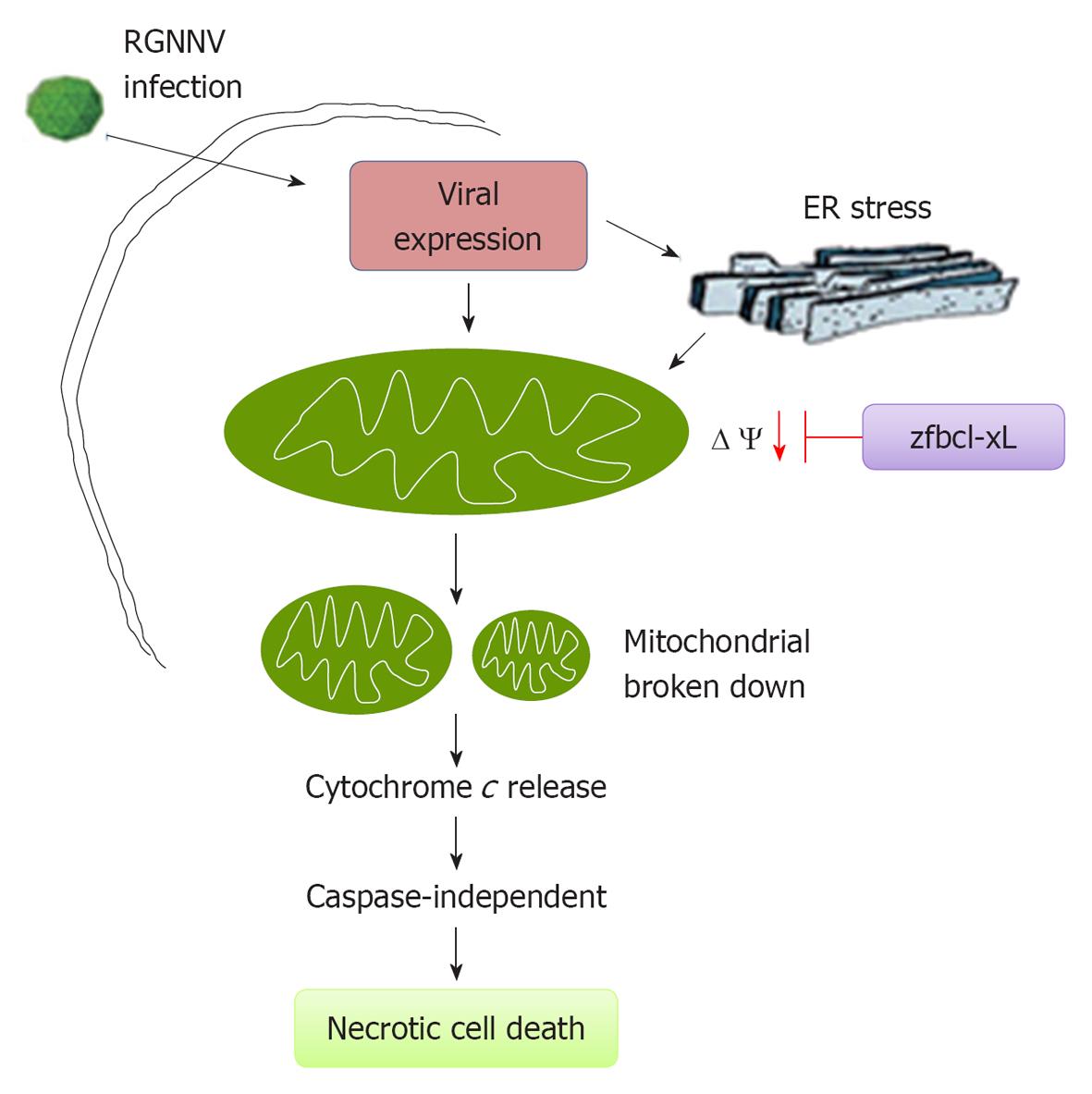Copyright
©2013 Baishideng.
Figure 1 Schematic working model for mitochondrial dysfunction caused by betanodavirus infection.
Red-spotted grouper nervous necrosis virus infection and early replication causes an ER stress response upon entry in the early replication stage [12 h postinfection (p.i.)]. Subsequently, this ER stress signaling can affect a number of important events, including enhanced viral expression, induction of mitochondrial membrane potential (MMP) loss, mitochondrial breakdown, and cytochrome c release at the middle replication stage (48 h p.i.). Bcl-2 may also be downregulated at the middle replication stage, as overexpression of Bcl-xL prevents loss of MMP. In regard to downstream events, cytochrome c release is not required or caspases activation or triggering of necrotic cell death at the late replication stage (72 h p.i.).
- Citation: Hong JR. Betanodavirus: Mitochondrial disruption and necrotic cell death. World J Virol 2013; 2(1): 1-5
- URL: https://www.wjgnet.com/2220-3249/full/v2/i1/1.htm
- DOI: https://dx.doi.org/10.5501/wjv.v2.i1.1









